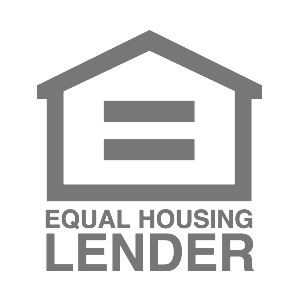
One of the reasons HELOCs are appealing to homeowners is because they typically have lower interest rates than home equity loans (not to mention the potential tax benefits)*. If you are considering a HELOC, it’s important to know the pros and cons so you can make an educated decision best suited for your financial life.
In This Article
What’s the difference between a fixed-rate HELOC and a variable-rate HELOC?
Most of the time, HELOCs are given at a variable interest rate. This means that the interest you pay can fluctuate monthly based on the changing market interest rate. This has its advantages and disadvantages.
When the market is doing well and interest rates are low, borrowers reap the benefits of paying a lower interest rate during that period. However, an unpredictable market means rates can increase at a moment’s notice, leaving borrowers with surprising upticks in monthly payments. And while it’s nice to pay less interest when market rates decrease, knowing that your payments are likely to change requires a little more thought while you’re planning and budgeting for the future. However, variable-rate HELOCs usually have a minimum and maximum cap for how much your rate can change during the lifetime of your plan.
What is a Fixed-rate HELOC?
However, HELOCs are also available at a fixed interest rate. A HELOC with a fixed rate locks in your interest rate for an extended period of time. This makes it easier to create and stick to budgets since your monthly payment will remain consistent throughout the draw period.
What you need to know about a fixed-rate HELOC
Fixed-rate HELOCs offer stability for borrowers as they know what their payments will be long-term. They bring greater peace of mind since you don’t have to worry about rising interest rates. If you can lock in a lower rate when taking out a HELOC, a fixed option is a good choice. However, if the market is competitive at the time you’re borrowing and rates are high, you may not be able to embrace a lower interest rate when the market subsides and rates decrease. Many people opt for a hybrid version of a fixed-rate HELOC, where you set up a period of time in advance where your interest will be fixed rather than variable.
Note that the longer the duration of your fixed-rate term, the higher your interest rate is. A 15-year fixed term will require a higher rate than a 10-year fixed term. You can establish a fixed rate for any period from one year to 30 years. And while your principal payment will be smaller the longer your HELOC term is, the interest rate will likely be higher in exchange.
Fixed-rate HELOCs are beneficial when you have large outstanding balances and are borrowing from your HELOC often, like for ongoing home improvement projects. The stability of your rate and frequent use of the line of credit make for a simple process that is much like using your credit card. However, if you don’t draw from your HELOC often, a fixed-rate may not be the best fit for you as variable interest rates may end up in your favor when you aren’t borrowing much.
Hybrid HELOC
However, many lenders allow for a hybrid set up where you can take advantage of both a fixed-rate HELOC and a variable-rate HELOC by establishing time periods for each rate when setting up your term. It’s important to talk to your lender about possibly unlocking that rate in advance if variable rates become a better option down the road. Fixed-rate HELOC terms vary greatly between lenders, so it’s important to shop around and discuss your advance options while establishing the term.
Converting a variable-rate HELOC to a fixed-rate HELOC
Let’s say you’ve already got a variable-rate HELOC, but you want to convert a portion of it to a fixed-rate HELOC. Luckily, you don’t need to submit a new loan application. Your lender will help you set up your new fixed-rate portion–but know that there are extra charges that come with it like a rate-lock fee or a conversion review fee.
If the extra fees (and any other requirements your lender may introduce) make sense for your financial plan, it’s time to consider your desired interest rate and fixed term length. Your lender should work with you on putting together a new fixed-rate HELOC plan.
Read more
- Prosper Provides Access to Fixed-Rate Home Equity Loans
- Using a HELOC to Pay Off Your Mortgage
- What Is a HELOC and How Does It Work?
- How Much Equity Do You Need for a HELOC?
- What Is a Variable Interest Rate?
* Prosper does not provide tax advice. Please consult a tax advisor regarding the potential deductibility of interest and charges.
Eligibility for a home equity loan or HELOC up to the maximum amount shown depends on the information provided in the home equity application. Depending on the lender, loans above $250,000 may require an in-home appraisal and title insurance. Depending on the lender, HELOC borrowers must take an initial draw of the greater of $50,000 or 50% of the total line amount at closing, except in Texas, where the minimum initial draw at closing is $60,000; subsequent HELOC draws are prohibited during the first 90 days following closing; after the first 90 days following closing, subsequent HELOC draws must be $1,000, or more, except in Texas, where the minimum subsequent draw amount is $4,000.
The amount of time it takes to get funds varies. It is measured from the time the lender receives all documents requested from the applicant and depends on the time it takes to verify information provided in the application. The time period calculation to get funds is based on the first 4 months of 2023 loan fundings, assumes the funds are wired, excludes weekends, and excludes the government-mandated disclosure waiting period.
For Texas home equity products through Prosper, funds cannot be used to pay (in part or in full) non-homestead debt at account opening.
Depending on the lender, qualified home equity applicants may borrow up to 80% – 95% of their primary home’s value and up to 80% – 90% of the value of a second home. In Texas, qualified applicants may borrow up to 80% of their home’s value. HELoan applicants may borrow up to 85% of the value of an investment property (not available for HELOCs).
Home equity products through Prosper may not be available in all states.
All home equity products are underwritten and issued by Prosper’s Lending Partners. Please see your agreement for details.
Prosper Marketplace, Inc. NMLS# 111473
Licensing & Disclosures | NMLS Consumer Access


